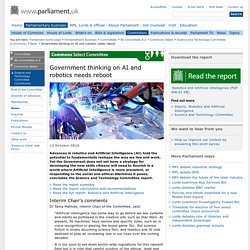

Youtube. Generation being born now is the last to be free Assange. The Power of Quantum Machine Learning and Artificial Intelligence. Real Virtuality: A Code of Ethical Conduct. Recommendations for Good Scientific Practice and the Consumers of VR-Technology. Preliminary Remarks Media reports indicate that virtual reality (VR) headsets will be commercially available in early 2016, or shortly thereafter, with offerings from, for example, Facebook (Oculus), HTC and Valve (Vive) Microsoft (HoloLens), and Sony (Morpheus).

There has been a good bit of attention devoted to the exciting possibilities that this new technology and the research behind it have to offer, but there has been less attention devoted to novel ethical issues or the risks and dangers that are foreseeable with the widespread use of VR. Here, we wish to list some of the ethical issues, present a first, non-exhaustive list of those risks, and offer concrete recommendations for minimizing them.
Of course, all this takes place in a wider sociocultural context: VR is a technology, and technologies change the objective world. Objective changes are subjectively perceived, and may lead to correlated shifts in value judgments. Figure 1. Government thinking on AI and robotics needs reboot. Interim Chair's comments Dr Tania Mathias, interim Chair of the Committee, said: "Artificial intelligence has some way to go before we see systems and robots as portrayed in the creative arts such as Star Wars.

At present, 'AI machines' have narrow and specific roles, such as in voice-recognition or playing the board game 'Go'. But science fiction is slowly becoming science fact, and robotics and AI look destined to play an increasing role in our lives over the coming decades.It is too soon to set down sector-wide regulations for this nascent field but it is vital that careful scrutiny of the ethical, legal and societal ramifications of artificially intelligent systems begins now. " Transformational impacts AI systems are starting to have transformational impacts on everyday life: from driverless cars and supercomputers that can assist doctors with medical diagnoses, to intelligent tutoring systems that can tailor lessons to meet a student's individual cognitive needs.
Dr Mathias said: Why the Future Doesn't Need Us. The Promises and Dangers of Ambient Intelligence in Your Life. Have you ever wondered about much machine intelligence is impacting your life today?

If not, don’t be surprised: if “ambient intelligence” is done right, you really shouldn’t have a clue – that’s the point. Ambient Intelligence (stylized as AmI) is a new way of thinking about human-computer interactions, characterized by embedded devices, wearables, and passive adaptation of technology to your needs. The goal of AmI is for technology to maximize its usefulness while minimizing its footprint on your attention.
In other words, AmI tries to be invisible, pulling data from the environment to make intelligent, helpful decisions for you, without you ever having to ask. Brain-to-Brain Communication Thousands of Miles Away Proven a Reality by Harvard Researchers. A group of international neuroscientists and robotics engineers have discovered for the first time that human brains can indeed ‘talk’ directly to one another, even from thousands of miles away.

A brain-to-brain communication study conducted in coordination with Harvard Medical School has proven that extrasensory mind-to mind interaction can happen over great distances by leveraging different pathways in the mind. The study, coauthored by Alvaro Pascual-Leone, Director of the Berenson-Allen Center for Noninvasive Brain Stimulation at Beth Israel Deaconess Medical Center (BIDMC) and a Professor of Neurology at Harvard Medical School, found that information can be successfully transmitted between two intact human brains from distances over 5000 miles apart. The researchers were curious if one could communicate directly with another person, and tested their hypothesis by reading the brain activity from one person injecting brain activity into the second individual. Additional Sources: Conscious Brain-to-Brain Communication in Humans Using Non-Invasive Technologies.
Human sensory and motor systems provide the natural means for the exchange of information between individuals, and, hence, the basis for human civilization.

Next Future Terrifying Technology Will Blow Your Mind. Mind control : remote neural monitoring. Jesse Beltran, ICAACT-leader, that met and scanned many victims of non-consensual implantation for Radio Frequency emissions, called the show of Daniel Estulin on Spanish RT where Magnus Olsson (eucach.org) is interviewed, "The greatest show on our issues ever made".

This show, with the original title "Control mental. El sueño dorado de los dueños del mundo" (Mind control. The golden dream of the world's masters) -- broadcasted to some 10 million people -- was one of the biggest victories for victims of implant technologies so far. Future brains: Controlling brains from outside by Vincent Walsh. Professor Vincent Walsh explains in this lecture some of the methods now used to image and stimulate the brain, their limits, potentials and dangers.

His hope is to make people aware of the limitations within the science community that often appears all-knowing. Scientists boost the importance of their research with unrealistic claims that can never be reached. Our understanding of the brain and how it works is still based on assumptions, yet many researchers claim that the brain research of today will explain everything. They also limit the discussion, by setting the norms for what can be discussed and what's not appropriate. It partially has to do with the pressure put on scientists to perform but also with the power structure in the scientific community itself. Digital Life in 2025. Autonomous technology and the greater human good.